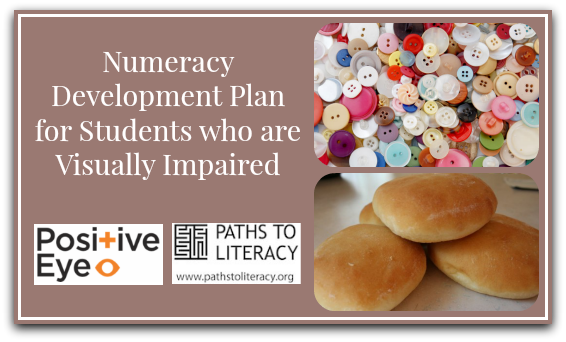
Resource
Numeracy Development Plan
This activity covers a numeracy development plan for students who are blind or visually impaired.
Developing Numerousness
One of the first crucial and important steps for the child is for them to understand numerousness, how much is 1, 2… the oneness of one, the twoness of two. The child needs to experience and to understand numerousness, through provision of a wide range of concrete activities and real experiences of maths. They need to continue to experience this in all areas, during their play, development and learning activities throughout their early years, foundation stage and beyond.
Understanding Numerousness
1. A good starting point is to make an ‘I am book.’
Example:
- I am Sam.
- I have 1 head, nose.
- I have 2 eyes, ears, hands, arms, legs and feet
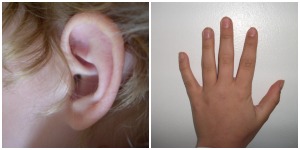
- I have ten fingers
- I have ten toes
- I have ten friends
- We have 100 hundred toes!
2. Make a ‘one’ book, make a ‘two’ book, make a ‘three’ book.
3. Provide as many concrete experiences as possible to support the child’s developing numerousness, supporting with teaching of appropriate language.
Examples:

- Matching and sorting activities – beads, buttons, bricks, shapes etc.
- Counting and sequencing: cups, plates, place settings, pens in pot, number of children, number of books etc. Games to promote counting – abacus, dice, bricks.
- Making patterns, threading beads, make patterns with different shapes, find patterns in the environment.
- Exploration of 3D and 2D shapes, match and sort by similarities and differences.
- Body awareness games moving onto positional language – e.g. can they put hand on hip, finger on nose.
- Firsthand experience of height, width, distance, space.
- Firsthand experience of measuring capacity of liquids, estimating amounts of liquids in different containers.
Example of numeracy development through a cross curricular approach
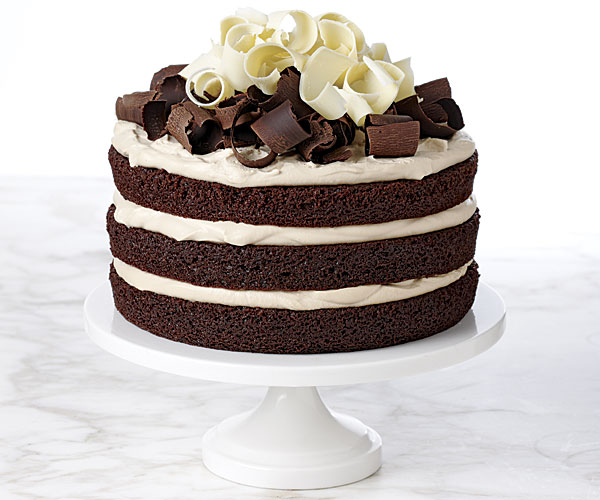
Theme: Serving Cakes in a Cafe
The aim at this stage is to utilise and find the concrete mathematical opportunities for learning from within the environment, from the world around, matching shapes, objects, textures, comparing, etc.
Serving cakes in the cafe – a bag containing:
4 large square mats, 4 small square mats, 4 knives, forks, spoons, 4 cups, 1 tablecloth, 4 napkins, 4 napkin rings, Salt and pepper pot , 4 bowls, 1 large plate for cakes, 4 bun cases. Purse with money
Set out on one table with four legs, and 4 chairs positioned around the table making 16 chair legs – child to count
Match shapes, categorise, and compare e.g.
- Squares – Mats, tablecloth, napkins.
- Circles – Cups, bowls, bun cases, napkin rings, money
- Cylinders – salt and pepper pot
- You could develop this, to use 2D shapes, to match to any shapes on the table.
Add and subtract
- E.g. Add/take away a number of cakes from plate; take one place setting away; add another place setting to make five. Take two settings away, talk about how many are left. How many people can sit at the table now? How many buns do three people need to order if they intend to eat one bun each?
- Play at being the waiter ordering a number of cakes for the people on the table; taking cakes from the large plate, placing a cake on each person’s plate, how many cakes left on the big plate?
- Place buns in a 6 bun tin. Make patterns with buns using the bun spaces in the tin. (Supports early understanding of braille cell formation.)
Sharing
- Share 4 cakes, between 4 plates – how many left
- Give two cakes to two people how many cakes left?
- Give one cake to one person, how many cakes are left?
- Buy cakes with money. Buy one cake how many cakes are left?
- How much is one cake, how much are two cakes?
Capacity
- Fill the cups with water, from a jug, how much water from the jug is needed to fill the cups?
- Find some bigger, smaller cups to fill and compare the amount of fluid needed.
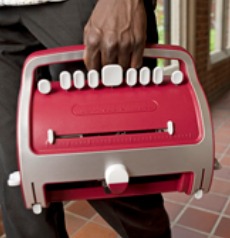 Writing the numeracy…….
Writing the numeracy…….
- Firstly, I would let the child practice writing numbers 1 -10 on the braille machine, lines of one, two, three, four, etc.
- You can write a line followed by the child writing a line.
- Child needs to be able re-find the number from the line of numbers written. E.g. find the number two, then match to two objects and put the number next to them. The child needs to understand that the number they have written is representative of a number of objects or things.
Writing the numeracy for serving cakes in a cafe……
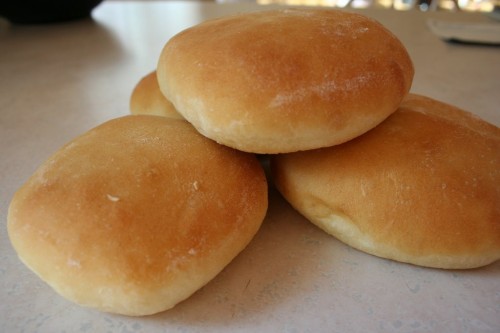
E.g. Practitioner to Child – How many buns are there on the plate?
Child – Four buns
Practitioner to Child – Find a number four and put it next to the buns.
Child – Adds one bun to the plate
Practitioner to Child – How many buns are on the plate now?
Child – Five buns
Options for writing it up
You could either…..
Write a sentence about what you have done, with the Child telling you what to write. E.g. Child says something like: “There are four cakes on the plate and I added one more bun, I now have five buns.” (Written verbatim)
Child can then braille a line of number ones, or number fives below.
Or: Give child braille numbers attached with Velcro to a number line.
Make separate plus/minus and equals signs with Velcro on back (on small squares of card)
Then Child can pull the numbers from the number line and make the sum by attaching them to a card which has matching squares of Velcro to stick the numbers and signs too.
Or: Write the sum in braille with child doing the actions of adding the buns together as you are doing it and as you both say the sum out loud together.
Child can then braille the sum beneath your sum.
Or: you write the sum for child and then he/she adds the objects as you do.
Place the buns out above the sum, so that he/she can see how it relates to the written version.
Make a number line in braille, to support developing knowledge of more than two, more than three, less than four etc, using it to count up and count down.
Only implement this when you know child can recognise numbers and that they can link them successfully to a number of objects.
